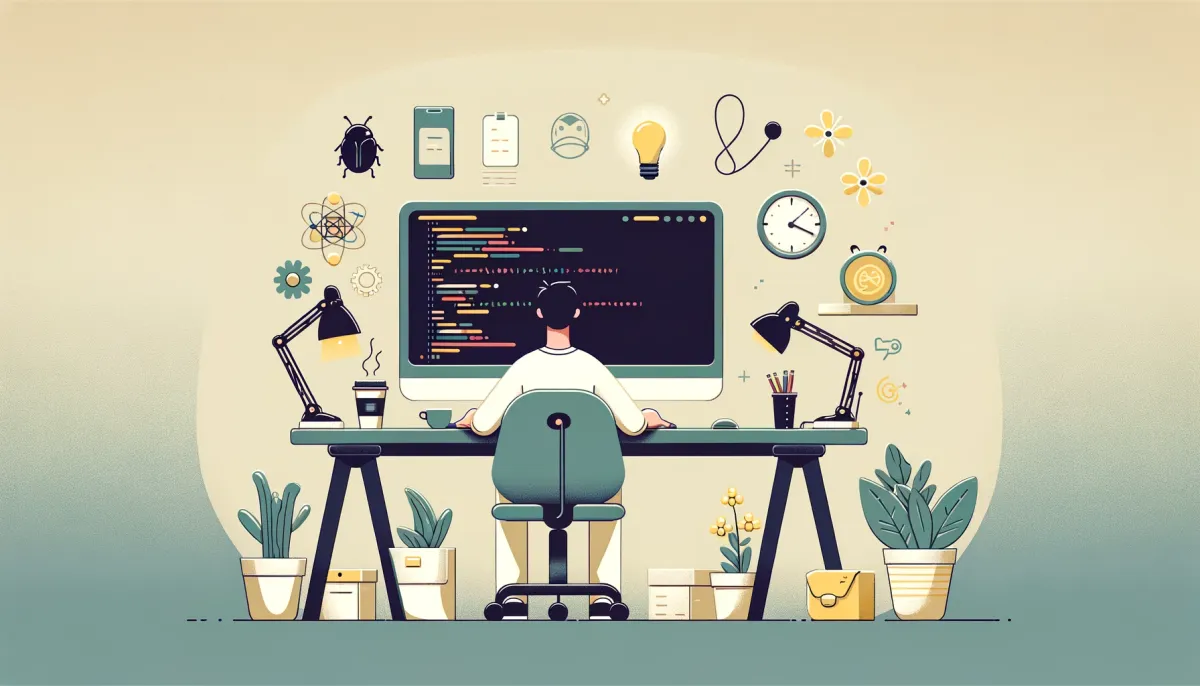Stages of Debugging

The journey through the debugging process is a tale as old as programming itself. It's a rollercoaster of emotions, challenges, and triumphs that every developer knows all too well. Let's embark on this odyssey, exploring each stage with a bit more depth and understanding of what truly goes on behind the screen.
🚫 Denial: The Inconceivable Error
The initial disbelief that greets every developer when they first encounter an unexpected error. "There's no way this code doesn't work," they mutter, staring at the screen as if it might change its mind. This stage is a testament to our optimism or perhaps our naivety, believing in the sanctity of our logic against all evidence.
😡 Anger: The Quest for Accountability
As reality sets in, frustration bubbles up. "Who wrote this function without any comments?!" becomes the rallying cry. Whether it's inherited code or something we wrote ourselves and forgot, this stage is marked by a fiery quest to find a culprit, often accompanied by a promise to never repeat the same mistakes (we inevitably do).
🤝 Bargaining: The Hope for a Simple Fix
Here, desperation meets hope. "If this patch works, I'll never write spaghetti code again," we bargain with the coding gods or any higher power listening. It's a moment of humble pie, where we're willing to trade anything for a miracle cure to our woes, fully knowing deep down that there are no shortcuts in code.
😞 Depression: The Weight of Rewriting
The sinking realization that a complete overhaul might be necessary. "I'm going to have to rewrite this?" is not just a question but a mourning for the time and effort that will inevitably be consumed. This stage is a testament to the daunting prospect of starting over, challenging our perseverance and resolve.
🤗 Acceptance: The Reluctant Reset
Eventually, we come to terms with our fate. "Fine, let's just rewrite it," we concede, embracing the inevitable. This acceptance is the first step towards genuine resolution, marking a pivotal shift from resistance to action. It's a begrudging nod to the fact that sometimes, starting afresh is the quickest path to progress.
🔁 Reflection: The Lessons Learned
Post-acceptance, we enter a phase of contemplation. "What did we learn?" becomes the reflective question guiding us. This stage is crucial for personal and professional growth, allowing us to distill valuable lessons from our struggles, ensuring that our future selves are wiser and more equipped.
🎉 Optimization: The Quest for Improvement
With lessons in tow, we look forward. "How can we make it better?" is not just about fixing the issue but enhancing performance, readability, and maintainability. This proactive stance transforms our ordeal into an opportunity for optimization, showcasing the relentless pursuit of excellence inherent in every developer.
🤔 Curiosity: The Local vs. Global Mystery
"Why does this work on my machine?" This age-old conundrum reminds us of the complexities of software environments. It's a humbling acknowledgment of the unpredictable nature of coding, where the same code can behave differently across systems, leading to a detective hunt for consistency.
🔁 Trial and Error: The Perseverance Playbook
Armed with hypotheses, we dive back into the fray. "Let's try one more thing..." symbolizes the iterative nature of debugging, where each attempt brings us closer to resolution. It's a testament to the perseverance of developers, undeterred by setbacks and driven by the promise of eventual success.
🤖 Automation: The Efficiency Engine
"Can a script fix this for me?" In our quest for solutions, we also seek efficiency. Automation represents the hope to delegate repetitive tasks to scripts, freeing us to focus on more complex problems. It's an embrace of tools and technologies that make our lives easier, showcasing the innovative spirit of developers.
👀 Review: The Critical Eye
Time to scrutinize every line of code. This stage is about meticulous examination and quality assurance. It's a disciplined approach to ensure that the fix is not just a patch but a sustainable solution, demonstrating the thoroughness and attention to detail that defines great developers.
🔬 Analysis: The Deep Dive
"What's happening under the hood?" Here, we seek to understand the root cause, not just the symptoms. It's a deep dive into the internals of our code and the systems it interacts with, embodying the analytical rigor and technical curiosity that are hallmarks of skilled developers.
🛠 Fix: The Moment of Triumph
"Got the solution, applying it now." This is the climax of our journey, where knowledge, skill, and persistence converge to solve the puzzle. It's a moment of satisfaction and relief, a testament to the problem-solving prowess that developers bring to the table.
🎉 Relief: The Sigh of Success
"Finally, it works as expected!" This exhalation of relief is the sweet reward after hours (sometimes days) of toil. It's a celebration of resilience, ingenuity, and the sheer joy of making things work, capturing the essence of what it means to be a developer.
📝 Documentation: The Wisdom Preserved
Writing this down for next time. The act of documentation is an investment in the future, ensuring that wisdom is not lost but shared. It's a commitment to the collective growth of the team and the broader developer community, solidifying best practices and sparing others from similar odysseys.
🍾 Celebration: The Victory Lap
Time to celebrate, bug squashed! This final stage is about acknowledging our efforts and successes, a necessary ritual that reinforces our passion and dedication. It's a reminder that behind every line of code, there's a human story of challenge, learning, and triumph.
Through these stages, we not only debug software but refine our approach, sharpen our skills, and deepen our understanding. Each stage, with its trials and triumphs, is a step towards becoming more adept, resilient, and insightful developers, forever pushing the boundaries of what's possible with code.




